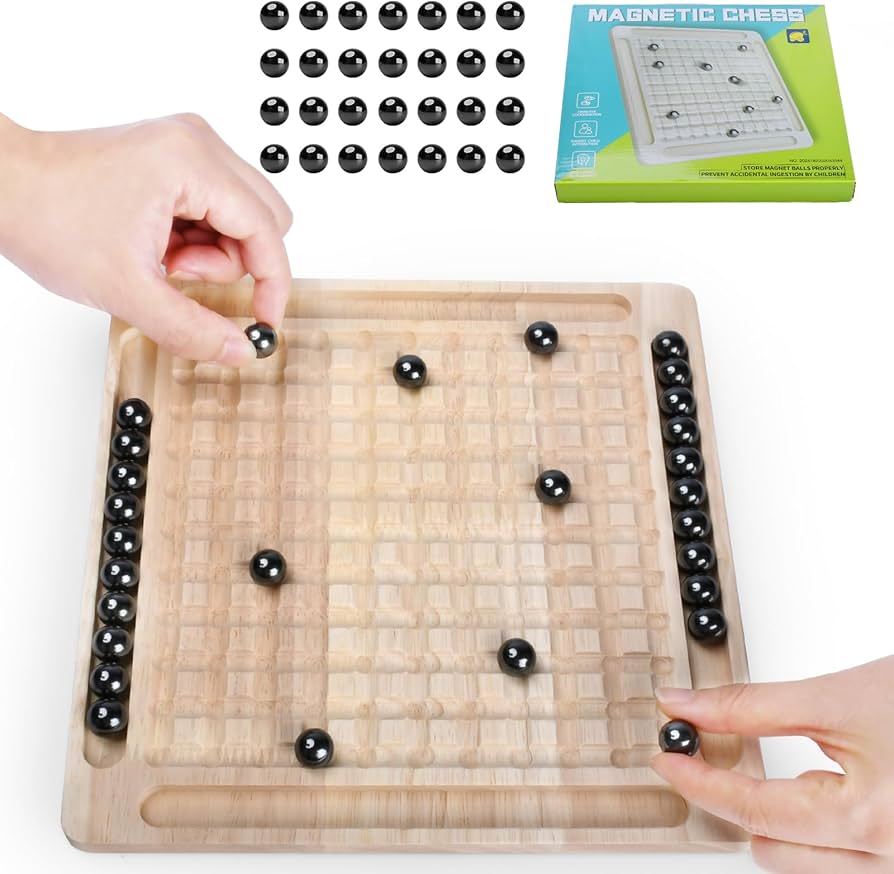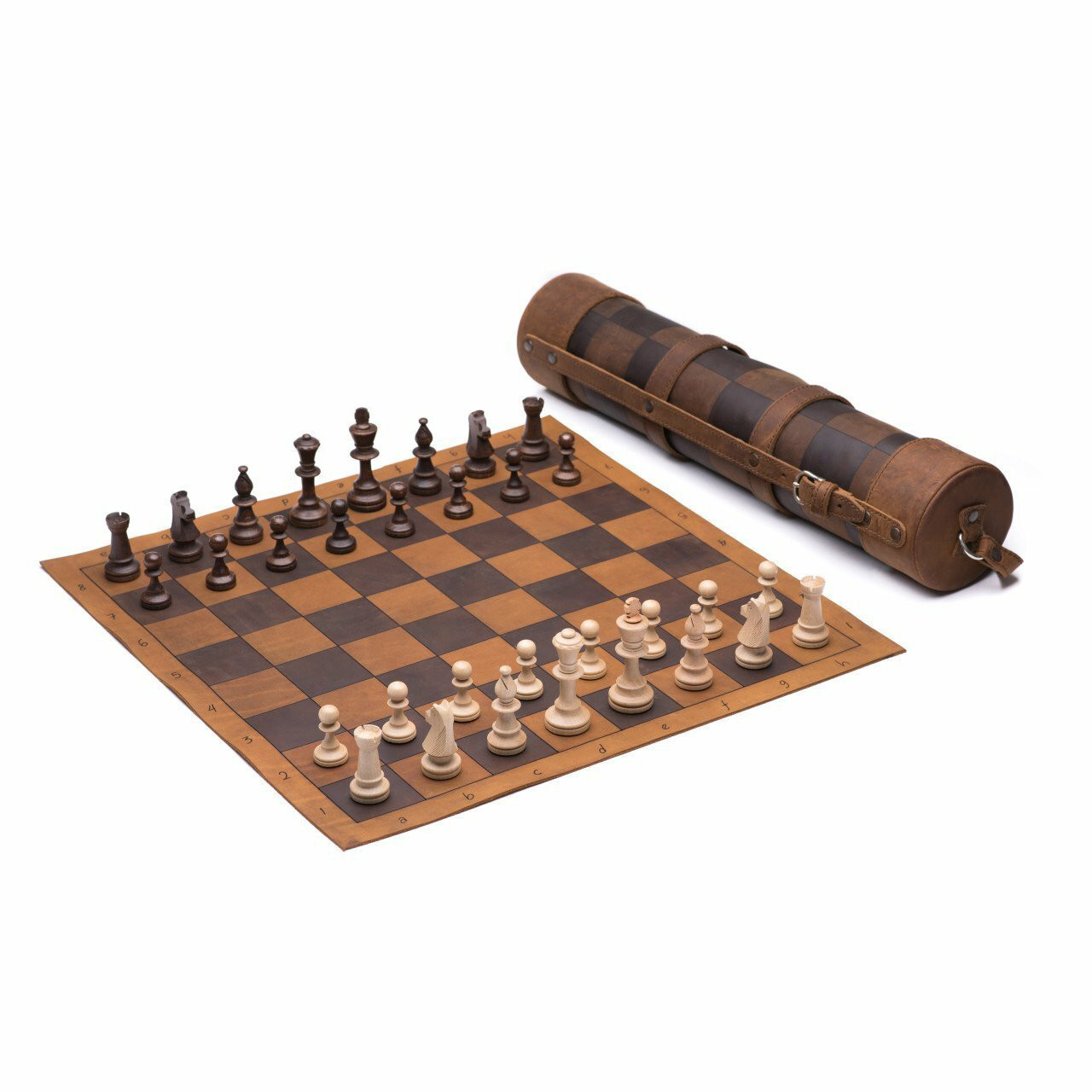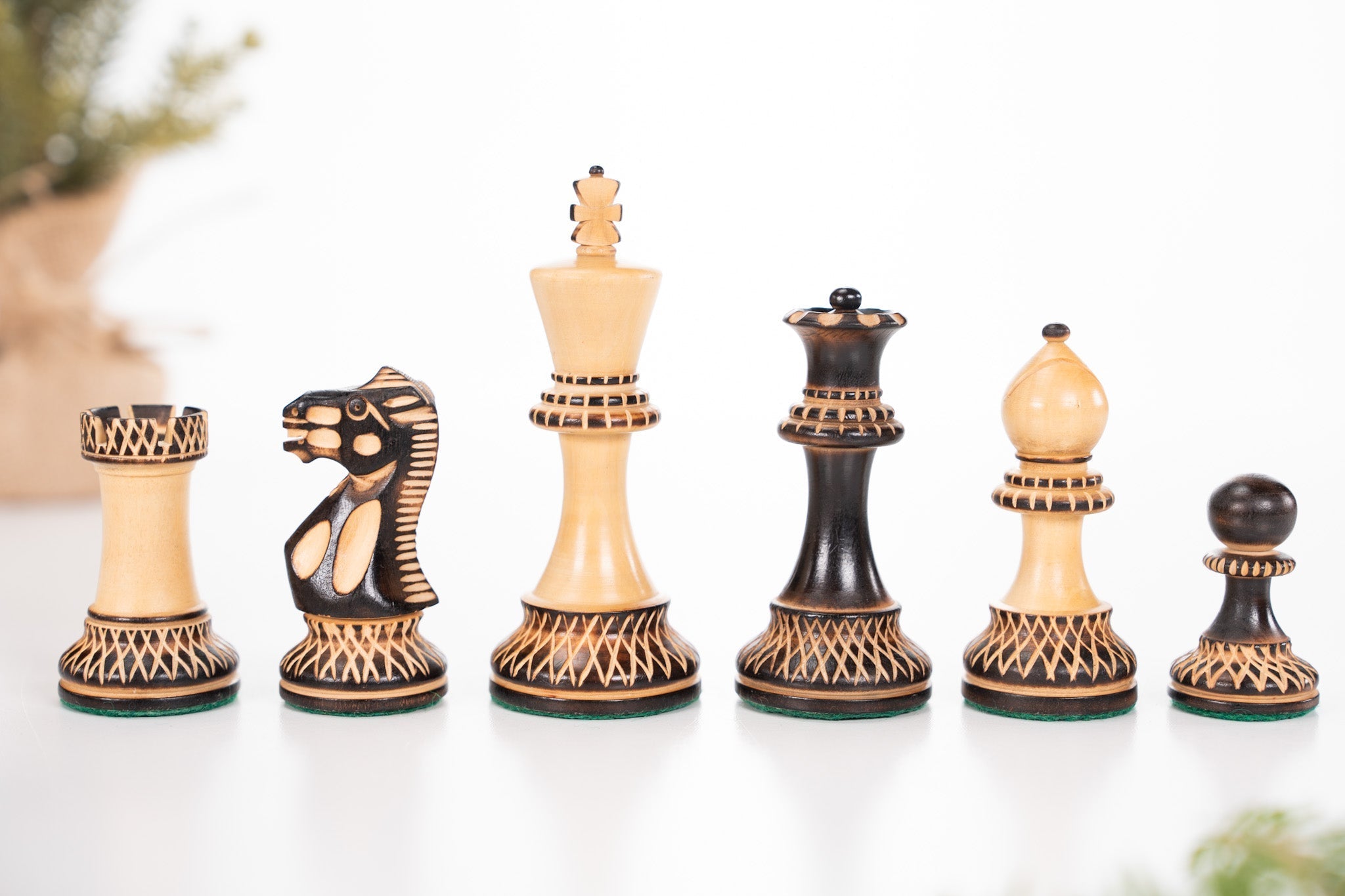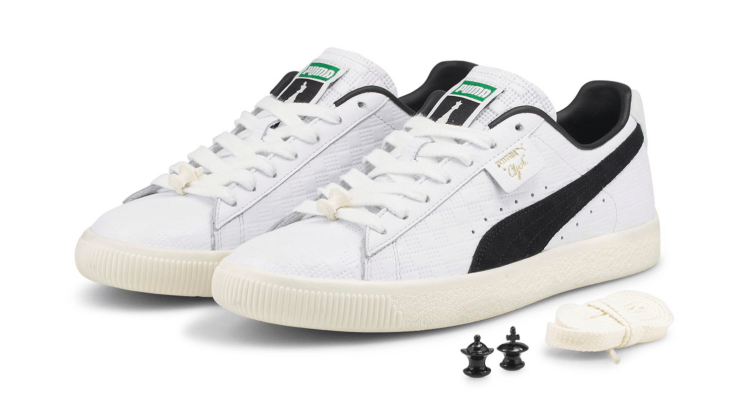Chess boards and pieces come in various sizes and materials. Knowing the standard sizes and materials can enhance your chess experience.
Chess is more than a game; it is a blend of art and strategy. The right board and pieces can make a difference. Whether you are a beginner or an advanced player, understanding the standard sizes and materials is essential.
This knowledge helps you choose the best set for your needs. With so many options available, it is easy to get overwhelmed. This guide will help you navigate the choices and find the perfect set. Get ready to dive into the world of chess boards and pieces, and make informed decisions. Enjoy the game with the right equipment at hand.

Credit: www.chess.com
Introduction To Chess Boards And Pieces
Chess is a game of strategy and intellect. The chess board and pieces are crucial to this ancient game. Knowing their standard sizes and materials helps in enjoying the game better. Let’s dive into the essentials of chess boards and pieces.
Brief History
Chess has a long and rich history. It originated in India around the 6th century. The game was called “Chaturanga” and had different rules. It spread to Persia and then to Europe. The modern game of chess evolved in the 15th century. The design of chess boards and pieces also changed over time.
Importance Of Standards
Standard sizes and materials are important in chess. They ensure fairness and uniformity. The World Chess Federation (FIDE) sets these standards. A standard chess board has 64 squares. Each square is 2-2.5 inches wide. Chess pieces also have standard sizes. The king is usually 3.75-4.5 inches tall. Pieces are made of wood, plastic, or metal.
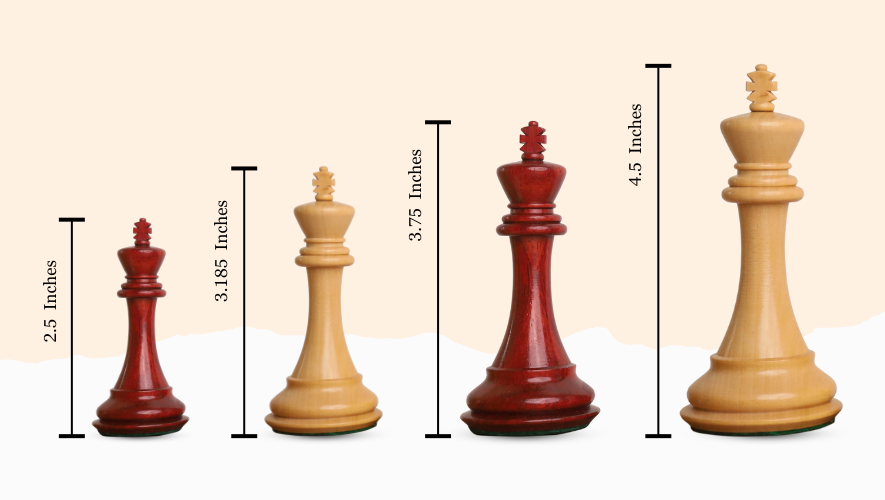
Credit: royalchessmall.com
Standard Chess Board Sizes
Choosing the right chess board size is crucial for a good game. There are different sizes for various purposes. The size influences the experience of the players. Some sizes are standardized for official tournaments. Others are better suited for casual play. Let’s explore the most common sizes.
Official Tournament Size
The official size for tournament chess boards is 20 inches. The board has 64 squares. Each square measures 2.25 inches. This size allows ample space for each piece. It helps players move pieces easily. The size also ensures clarity for spectators. Tournament boards are usually made of high-quality materials. They often use wood or vinyl. These materials offer durability and a nice appearance.
Casual Play Sizes
For casual play, the board size can vary. A common size is 15 inches. Each square on this board measures 1.75 inches. This size is more compact. It is ideal for home use or travel. Smaller boards are also available. Some measure as small as 12 inches. These are perfect for limited spaces. Casual boards come in various materials. They can be made of cardboard, plastic, or wood. The choice depends on personal preference and budget.
Chess Board Materials
Choosing the right chess board material can enhance your playing experience. Different materials offer various benefits and aesthetics. Here, we’ll explore some popular materials used in chess boards.
Wooden Boards
Wooden chess boards are the most traditional and popular. They offer a classic look and feel. Common woods used include walnut, maple, and mahogany. Wooden boards are durable and can last for generations. They are often handcrafted, adding to their charm. The natural texture of wood provides a pleasing tactile experience.
Vinyl And Plastic Boards
Vinyl and plastic boards are affordable and lightweight. They are great for beginners and casual players. These boards are easy to clean and maintain. They are also portable, making them perfect for travel. Vinyl and plastic boards are available in various colors and designs. They are ideal for those seeking practicality over aesthetics.
Glass And Marble Boards
Glass and marble chess boards are elegant and luxurious. They are often used as decorative pieces. Glass boards can be transparent or frosted, adding a modern touch. Marble boards come in various colors and patterns. Both materials are heavy and sturdy. They require careful handling to avoid damage. These boards are best for special occasions and display.
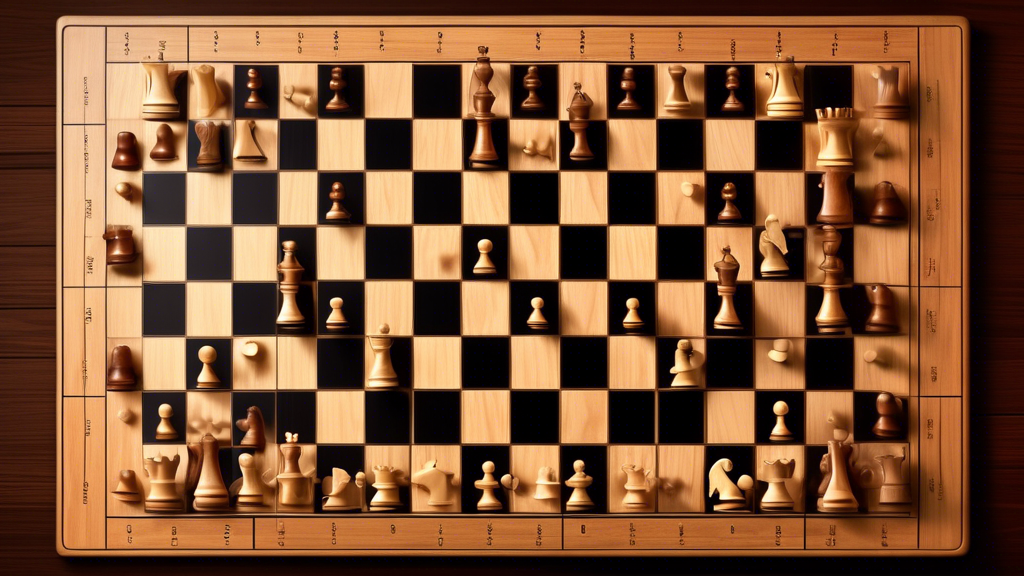
Credit: mychessets.com
Standard Chess Piece Sizes
Understanding the standard sizes of chess pieces is crucial for a proper game experience. The size of each piece affects gameplay and aesthetics. In this section, we will explore the standard sizes for chess pieces.
King Height And Base Diameter
The King is the tallest and most important piece on the board. The standard height for a King is between 3.75 inches and 4.25 inches. The base diameter of the King should be around 40-50% of its height. For example, a King with a height of 4 inches should have a base diameter of around 1.6 to 2 inches. This proportion ensures stability and ease of movement during the game.
Proportional Sizes Of Other Pieces
Other pieces are sized in proportion to the King. Here is a table summarizing the average sizes:
| Piece | Height (inches) | Base Diameter (inches) |
|---|---|---|
| Queen | 3.5 – 3.75 | 1.5 – 1.875 |
| Rook | 2.25 – 2.5 | 1.125 – 1.25 |
| Bishop | 2.75 – 3 | 1.375 – 1.5 |
| Knight | 2.75 – 3 | 1.375 – 1.5 |
| Pawn | 1.75 – 2.0 | 0.875 – 1.0 |
These sizes ensure that each piece is easily distinguishable and functional. They are designed to be balanced for smooth gameplay. Making sure your chess pieces adhere to these standards will enhance your playing experience.
Chess Piece Materials
Chess pieces come in various materials, each offering unique features and aesthetics. The choice of material affects the feel, look, and durability of the pieces. Here, we will explore three common materials used for chess pieces: wood, plastic, and metal.
Wooden Pieces
Wooden chess pieces are classic and timeless. They are often preferred for their natural beauty and craftsmanship. These pieces can be made from various types of wood, such as boxwood, ebony, or rosewood. Wooden pieces are usually heavier and provide a pleasant tactile experience. They are often hand-carved, making each set unique.
Plastic Pieces
Plastic chess pieces are lightweight and durable. They are ideal for beginners and children. These pieces are usually more affordable and easy to replace. They come in many colors and designs, making them versatile. Plastic pieces are also great for outdoor play as they are weather-resistant.
Metal Pieces
Metal chess pieces offer a distinct and elegant look. They are often made from brass, aluminum, or stainless steel. These pieces are sturdy and have a satisfying weight. Metal chess pieces are perfect for those seeking a modern and luxurious set. They are also less prone to damage compared to wood.
Choosing The Right Chess Set
Choosing the right chess set can enhance your playing experience. Various factors should be considered. This includes the purpose of use and your budget. Finding the perfect set can be simple with the right guidance.
Purpose Of Use
First, determine the purpose of your chess set. Is it for casual play or tournaments? Casual sets are often more decorative. Tournament sets follow specific standards. They have a regulation size and weight. This helps players focus on their game.
Travel chess sets are another option. They are smaller and portable. Magnetic pieces prevent movement during travel. Choose a set that fits your playing needs.
Budget Considerations
Budget is another important factor. Chess sets come in various price ranges. Basic plastic sets are inexpensive. They are suitable for beginners. Wooden sets are more expensive. They offer a classic feel and durability. Luxury sets can be quite costly. They are often made of high-quality materials. Think about how much you are willing to spend. This will help you narrow down your options.
Care And Maintenance
Maintaining your chess board and pieces is crucial. Proper care ensures they last longer and look great. This section provides tips for cleaning and storing your chess set.
Cleaning Techniques
Keeping your chess set clean is essential. Dust and dirt can damage the pieces and board. Here are some effective cleaning methods:
- Dust Regularly: Use a soft, dry cloth to dust the board and pieces. Avoid harsh chemicals.
- Mild Soap Solution: For tougher dirt, use a mild soap solution. Dampen a cloth with soapy water and wipe gently.
- Avoid Water: Never soak your pieces or board in water. It can cause warping or damage.
- Polish Wood: If your set is wooden, use a suitable wood polish. This keeps the wood shiny and protected.
Storage Solutions
Storing your chess set properly prevents damage and loss. Here are some storage solutions:
- Dedicated Box: Use a dedicated storage box for your pieces. It prevents them from getting lost or damaged.
- Padded Case: For added protection, choose a padded case. It cushions the pieces and keeps them safe.
- Avoid Direct Sunlight: Store your board and pieces away from direct sunlight. UV rays can fade the colors.
- Cool, Dry Place: Keep your set in a cool, dry place. Humidity can cause wood to warp and metal to tarnish.
Taking care of your chess set extends its life. Clean it regularly and store it properly. This way, it will stay in great condition for years.
Conclusion
Choosing the right chess board and pieces enhances your game experience. Standard sizes ensure consistency and ease of play. Various materials offer different aesthetics and durability. Wooden sets are classic and durable. Plastic sets are affordable and practical. Metal sets provide a unique, elegant look.
Always consider your playing environment and preferences. Investing in a quality set brings more enjoyment to your matches. Explore options and find the perfect set for you. Happy playing!

